What if we told you that there is a secret portal to SEO success within your website?
It’s not some kind of hidden magic or a charmed term, but something much simpler: your URL structure! A URL structure is like a hero that is frequently disregarded but has the power to make or destroy your SEO efforts.
But wait, weren’t we talking about SEO-friendly URL structures? Calm down; they’re up next.
Similar to a well-designed map that points to hidden gems, an SEO-friendly URL can easily direct readers and search engines to your content. However, only a handful of people know how to use these SEO-friendly URL structures properly.
Now we know you’re curious like never before and want to be among these few people.
So, are you ready to use the power of structuring URLs to boost your website ranks to new heights?
Let’s move forward, then!
What Are SEO-Friendly URLs?
First and foremost, let us clarify what the term ‘SEO-friendly’ actually implies in relation to URLs. When done perfectly, it can be viewed more like a signpost created to help both people and search engines understand where they are being led.
It is short and specific and provides an indication of what the page contains, all the while weaving in keywords that are relevant to the content of the page.
Here’s a quick example:
- Non-SEO-Friendly URL: https://example.com/article?id=12345
- SEO-Friendly URL: https://example.com/ultimate-guide-seo-friendly-urls
The second URL is significantly more straightforward to read, contains terms (such as “SEO-friendly” and “URL”) to help search engines and users comprehend the content of the website, and is far more descriptive. This is what makes it SEO-friendly.
Why Are SEO-Friendly URLs Important?
The structure of the URLs is counted among the initial attributes that both the search engine and the user look into when visiting a page. It has several essential roles in SEO.
- Improved Crawlability: Web crawlers or spiders that are used by search engines such as Google are responsible for visiting and crawling websites. If your URL structure is well maintained and uncluttered, the crawling and indexing job of these bots will be facilitated, improving your ranking.
- Better User Experience: URLs that appear clear, descriptive, and accessible of symbols and numbers are favored by users and are clicked more frequently. The structure of the URL lets the user know what to expect when they follow the link to the particular content.
- Enhanced Click-Through Rates (CTR): Good and readable URLs that contain the keywords used in the search query can improve the CTR of the website.
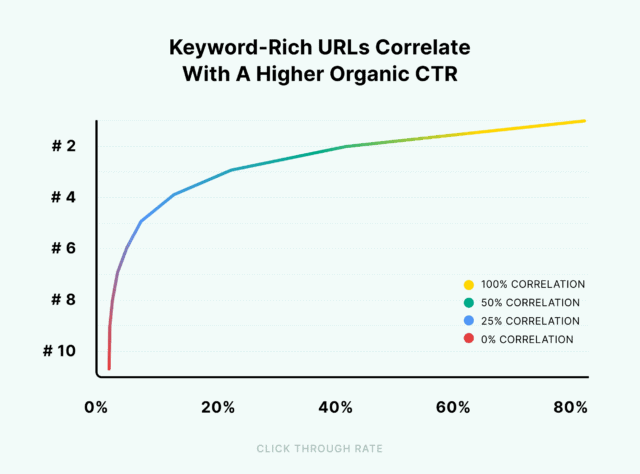
In fact, a study by Backlinko indicated that URLs that contain terms similar to a keyword have a 45% higher click-through rate than URLs that don’t contain a keyword. A high CTR is an indication to the search engine that your page is relevant to the user and will improve your rankings as well as increase traffic.
- Keyword Relevance: Keyword incorporation in the URL of your webpage increases the page’s relevance to queries with the specific keywords. However, it does not significantly help your SEO efforts; having keyword-dense URLs can provide you with a slight competitive advantage.
Characteristics of SEO-Friendly URLs
What, then, qualifies a URL as SEO-friendly?
The following are some essential traits.
1. Short and Simple
Google prefers shorter URLs because they rank higher in comparison to longer URLs.
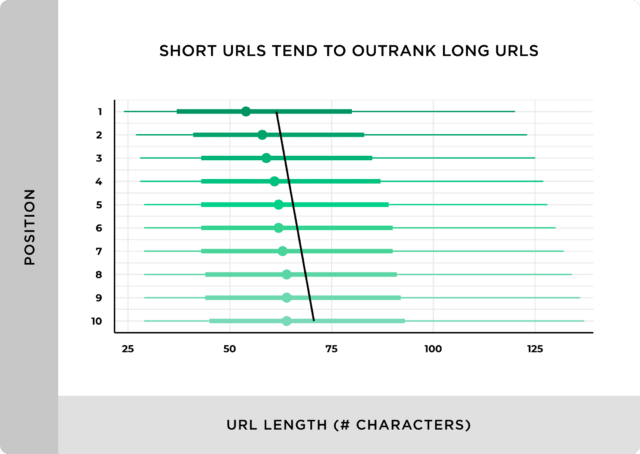
To back this up, a study by Backlinko found that short URLs tend to rank slightly better than long URLs.
They are more straightforward for the users to comprehend and for the search engine crawlers to interpret and follow. This means that URLs ought to be as short as possible but should also be descriptive.
- Example of an Ideal URL: https://example.com/best-hiking-boots
- Example of a Long URL: https://example.com/all-you-need-to-know-about-hiking-boots-including-features-reviews
The first URL is shorter and not filled with unnecessary words, which helps SEO and the user.
2. Keyword Usage
It is essential to include your keywords in the URL because the search engine can be informed of the type of page it is. However, do not reduce your URL to a set of keywords as it looks spammy, and those keywords may not even improve your ranking.
- Good Example: https://example.com/seo-tips
- Bad Example: https://example.com/seo-tips-seo-guide-best-seo-practices
In the first example, a target keyword is ‘SEO tips’; it is found in the URL but is not overloaded.
3. Use Hyphens to Separate Words
Hyphens (-) are interpreted by search engines as spaces between the words. It is a commonly accepted SEO practice to use hyphens separating words in the URL.
- Example of a Proper URL: https://example.com/seo-friendly-url-structure
- Example of a Bad URL: https://example.com/seofriendlyurlstructure
The use of hyphens makes the URL easily understandable by the user as well as the search engines.
4. Lowercase Letters
Another thing that you must remember is lower case letters should be used in URLs.
Most servers are case-sensitive when it comes to URLs; hence, example.com/Page and example.com/page may be considered as two unique URLs and, therefore, may result in duplication of content.
- Good Example: https://example.com/seo-best-practices
- Bad Example: https://example.com/SEO-Best-Practices
As with everything, it is better to stick to lowercase in order to avoid confusing all of the content and prevent the creation of duplicate pages.
5. Avoid Special Characters
Search engines and users themselves can be confused by symbols such as #, %, & etc. These characters are not always adequately encoded and can make your URLs harder to read.
- Good Example: https://example.com/how-to-make-pizza
- Bad Example: https://example.com/how%20to%20make%20pizza
Appropriate URLs that are not disoriented by special characters are more convenient to work with in terms of crawling and for the user.
6. Remove Stop Words
Prepositions (like “and,” “or,” “but,” “is,” etc.) are not actually very beneficial to your URL and only make it even longer.
Although the parameter is valid when used in a URL to reference multiple pieces of information, it can make your URLs long and messy, so deciding to omit them will make your URLs shorter and standard.
- Good Example: https://example.com/best-hiking-boots
- Bad Example: https://example.com/best-hiking-boots-for-men-and-women
Although the second URL is not wrong, removing the stop words not only makes the URL more straightforward to read but also omits any information that isn’t necessary.
Best Practices for Creating SEO-Friendly URL Structures
After learning the traits of SEO-friendly URLs, let’s examine some best practices to assist you in developing efficient URL structures for your website.
1. Use a Consistent URL Structure
Maintaining a consistent URL structure throughout your website improves internal linking, which further facilitates search engine crawling.
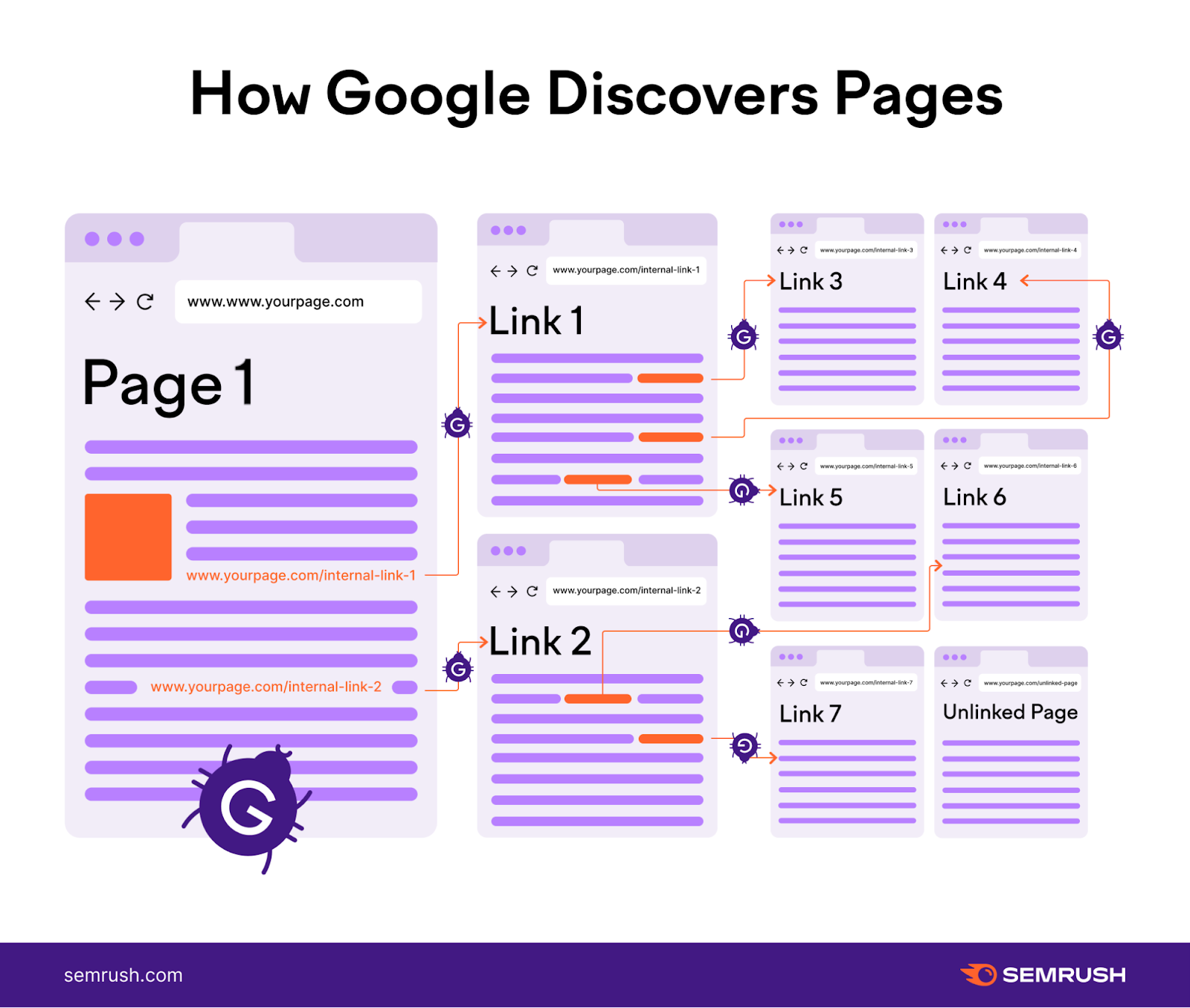
Internal links have a direct impact on the crawlability of your website.
An illustration of a consistent URL structure may be seen here.
- Category Page: https://example.com/products
- Subcategory Page: https://example.com/products/shoes
- Product Page: https://example.com/products/shoes/running-shoes
Maintaining consistency makes your URLs more logical and user-friendly.
2. Keep Your URLs Under 60 Characters
Although there isn’t a set length limit for URLs, it’s generally advised to keep them under 60 characters.
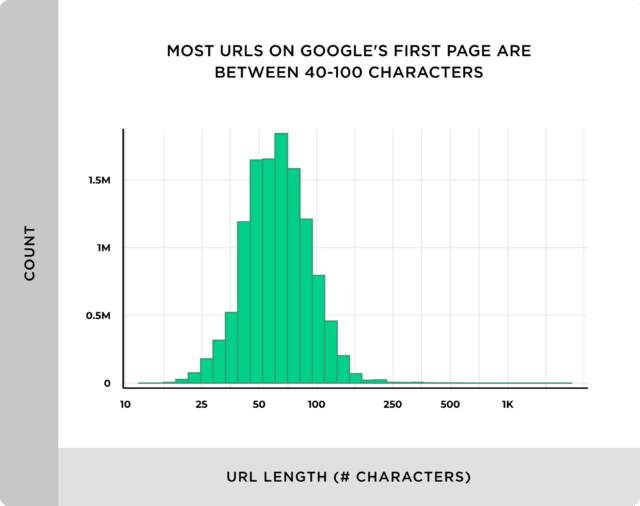
According to research by Backlinko, the typical URL length for a Google top 10 result is 66 characters. However, as a whole, most URLs on the first page of Google are approximately the same length.
- Good Example: https://example.com/seo-tools
- Too Long Example: https://example.com/a-complete-guide-to-the-best-seo-tools-you-can-use
Shortening the second URL wouldn’t affect its meaning.
3. Use Categories Wisely
You may make your URL structure more sensible by using categories and subcategories. For instance, you might group your URLs according to product categories if you own an online store.
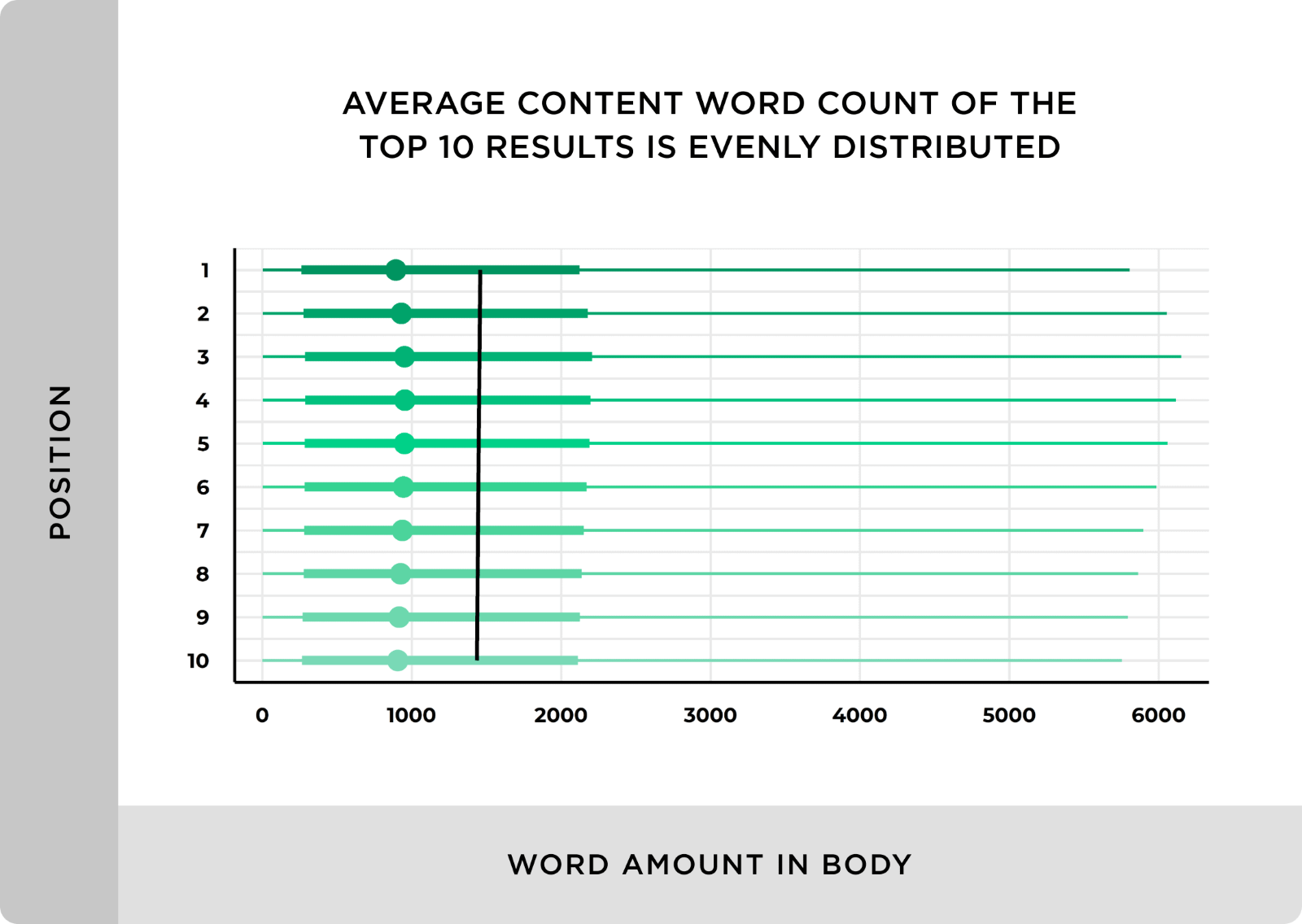
Content with more words can cover a wider breadth and is likely preferable in the algorithm compared to shorter, superficial articles.
However, make sure that you don’t make your URLs excessively lengthy.
- Example of a Well-Organized URL: https://example.com/clothing/mens/t-shirts
4. Use Secure URLs (HTTPS)
Since Google has verified that HTTPS is a ranking indicator, using HTTPS rather than HTTP is imperative.
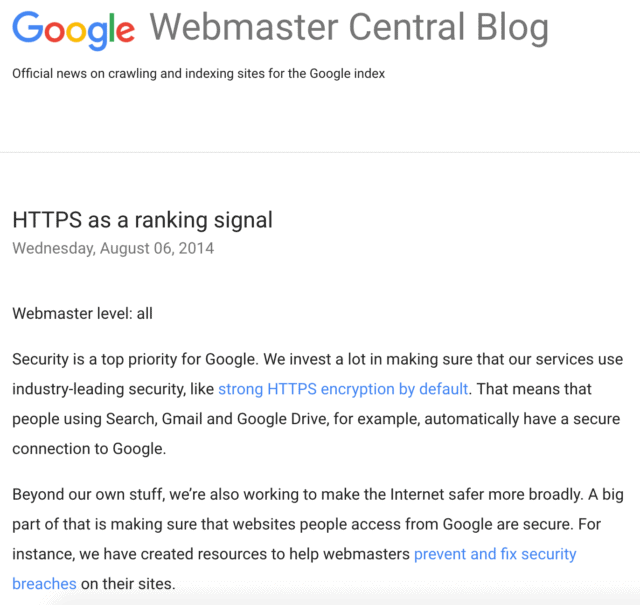
According to Google, however, HTTPS only acts as a ‘tiebreaker.’
In addition to improving your SEO, this also enhances your users’ security.
- Good Example: https://example.com
- Bad Example: http://example.com
If you haven’t already, make sure your website is updated to HTTPS.
5. Avoid Using Dynamic Parameters
Search engines may find it challenging to crawl and index dynamic URLs that contain characters like? =, or &. Try rewriting dynamic URLs instead to make them easier to understand.
- Bad Example: https://example.com/article?id=1234&category=5678
- Good Example: https://example.com/blog/ultimate-seo-guide
Both search engines and people benefit from clean, static URLs.
6. Implement a 301 Redirect for URL Changes
Make sure to use a 301 redirect from the old URL to the new one if you ever need to alter a page’s URL. This guarantees that search engines and people are sent to the proper page and that the previous URL retains all of its SEO value.
- Example: If you change https://example.com/old-url to https://example.com/new-url, make sure to set up a 301 redirect from the old URL to the new one.
7. Avoid Keyword Stuffing
Although it’s crucial to incorporate keywords into your URL, take care not to use too many. Overstuffing your URLs with keywords might harm your SEO and make them appear spammy.
- Bad Example: https://example.com/buy-best-running-shoes-best-running-shoes-sale
Make sure your URLs are readable and organic.
Common SEO URL Mistakes to Avoid
Let’s examine some typical errors to avoid when designing your URL structure now that we’ve discussed excellent practices.
1. Changing URLs Without a Redirect
As was previously said, if you change your URL without using a 301 redirect, you may lose traffic, break links, and see a drop in your results. In order to maintain your SEO, always reroute old URLs to new ones.
2. Creating Duplicate Content
If two distinct URLs point to the same page, it’s called duplicate content. For instance, search engines differentiate between https://example.com/page and https://www.example.com/page. Use redirects or canonical tags to make sure search engines only index one version of the page in order to prevent this.
3. Using Non-Descriptive URLs
A URL such as https://example.com/page12345 does not provide any clue as to the subject matter of the article. Use keyword-rich, descriptive URLs at all times to aid visitors and search engines in understanding the content of the page.
4. Overusing Subdomains
Although subdomains, like blog.example.com, have a role, employing them excessively might weaken your SEO efforts. Your SEO value might not be transferred between the leading site and the subdomain since search engines frequently perceive subdomains as distinct entities.
Bottomline
One of the most straightforward yet efficient methods to raise your website’s search engine ranks is to use an SEO-friendly URL structure.
Keep in mind that while URL optimization is only one element of a good SEO plan, it is an important one that cannot be disregarded.
Your rankings and user experience will probably increase if you make the effort to audit and optimize your URLs.
